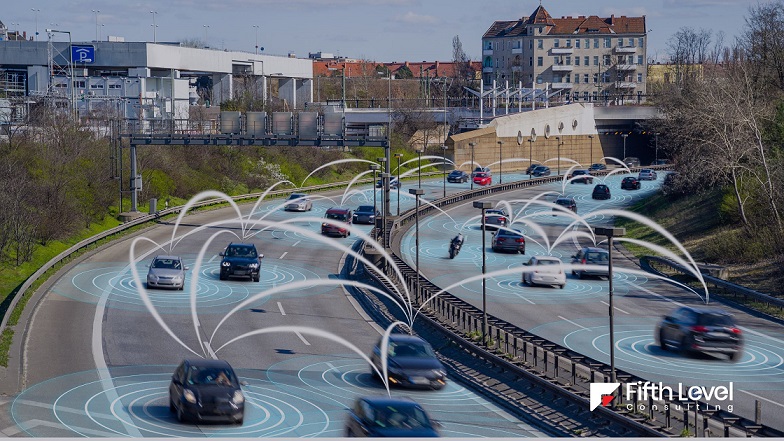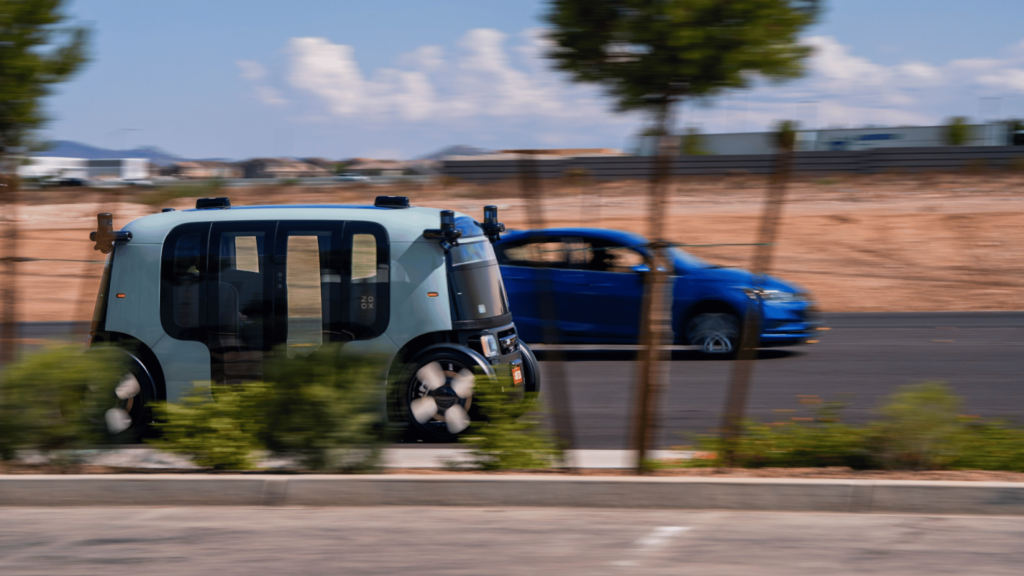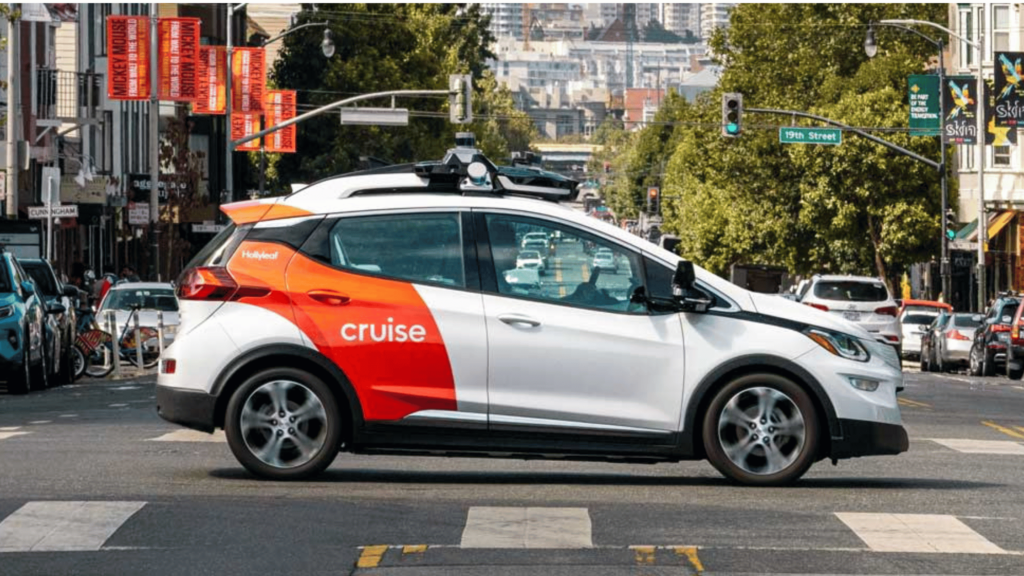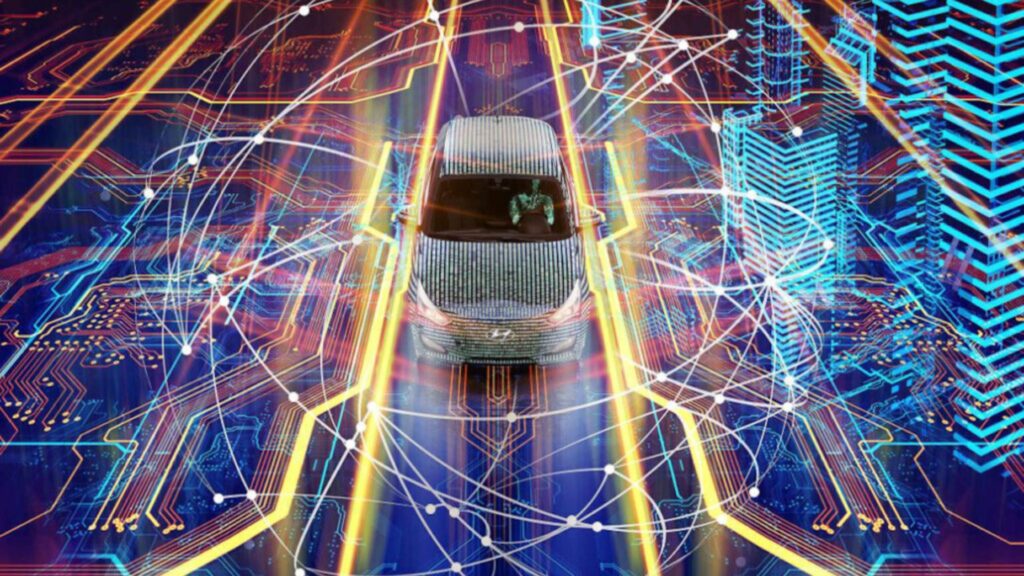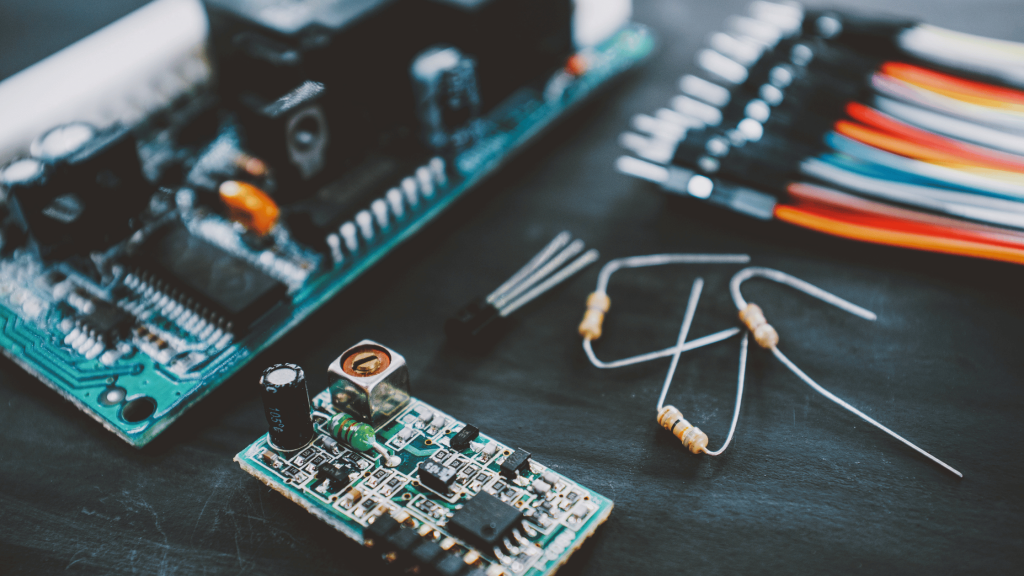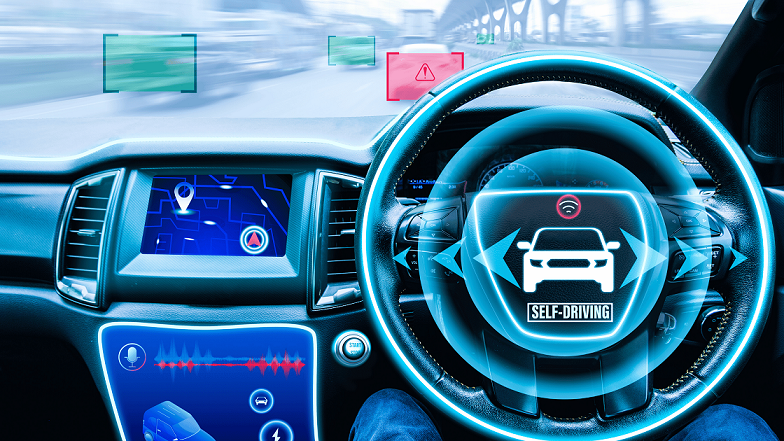Table of Contents
The world of self-driving electric cars has evolved beautifully over the past decade, and 2025 has been simply phenomenal for autonomous vehicle technology. As someone who has spent over 10 years researching and analyzing these incredible machines, I’m excited to share with you the most comprehensive guide to the best self-driving electric cars available today.
Self-driving electric cars combine two revolutionary technologies: electric powertrains that are kinder to our environment and autonomous systems that promise safer, more convenient transportation. The vehicles on this list represent the pinnacle of what’s currently available to consumers, each offering unique strengths in their approach to autonomous driving.
What Makes a Great Self-Driving Electric Car?
Before we dive into our top 10, let me share what criteria I used to evaluate these vehicles:
- Sensor Technology: The quality and variety of cameras, radar, LiDAR, and ultrasonic sensors
- Processing Power: The computational capability to handle real-time decision-making
- Software Intelligence: How well the AI responds to real-world driving scenarios
- Safety Performance: Accident rates and third-party safety evaluations
- User Experience: How intuitive and reliable the systems are for everyday drivers
- Geographic Availability: Where these features are legally available and activated
1. Tesla Model S Plaid
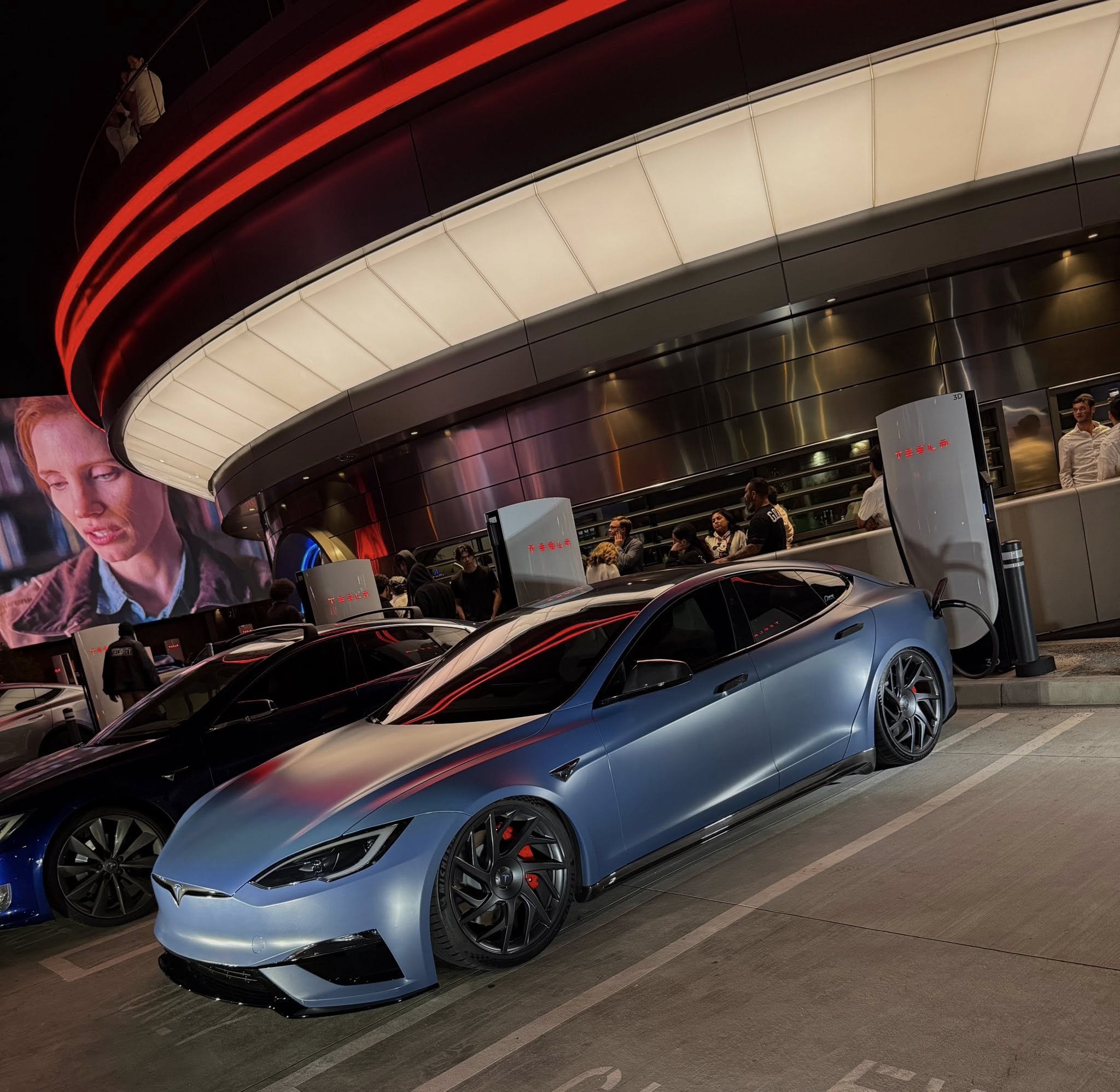
The Tesla Model S Plaid remains the flagship of autonomous driving technology, combining breathtaking performance with the most advanced self-driving capabilities available to consumers. The gonzo Plaid version, which boasts a third electric motor and 1020 horsepower, reached 60 mph in just 2.1 seconds in our testing, making it not just smart, but incredibly powerful.
Sensor Capabilities
- 8 surround cameras providing 360-degree visibility
- 12 ultrasonic sensors for close-range detection
- Forward-facing radar for long-range object detection
- Interior cabin camera for driver monitoring
Hardware
- Full Self-Driving (FSD) Computer with dual neural processing units
- Custom AI inference chips designed specifically for autonomous driving
- Redundant power systems and fail-safe mechanisms
- Over-the-air update capability for continuous improvements
Level of Automation
SAE Level 2+ (supervised autonomy) with Full Self-Driving Beta capabilities including city street navigation, traffic light and stop sign recognition, and automated lane changes.
Miles Driven in Autonomous Mode
In January 2025, Tesla said its customers had driven 3 billion miles on FSD (Supervised), representing the largest real-world autonomous driving dataset in the industry.
Autonomous Driving Features
- Navigate on Autopilot: Highway on-ramp to off-ramp driving
- Auto Lane Change: Intelligent lane changes based on navigation
- Traffic Light and Stop Sign Control: Recognizes and responds to traffic signals
- Smart Summon: Vehicle can navigate parking lots to reach you
- Autopark: Parallel and perpendicular parking assistance
Software and Intelligence Performance
Tesla’s neural network approach sets it apart, with the system learning from billions of miles of real-world driving data. The AI continuously improves through over-the-air updates, typically receiving monthly enhancements.
User Experience and Interface
The minimalist 17-inch touchscreen provides clear visualization of what the car “sees” in real-time. The system offers gentle audio and visual cues, though it requires active driver supervision at all times.
Third-Party Safety Ratings and Safety Results
The Model S has earned a 5-star overall safety rating from NHTSA. However, Tesla’s own data confirms Autopilot safety has regressed so far in 2025, indicating some recent challenges with system performance.
Geographic Availability and Regulatory Approvals
FSD Beta is available in the United States and Canada, with expansion to Europe pending regulatory approval. The basic Autopilot features are available globally where Tesla operates.
2. Mercedes-Benz EQS
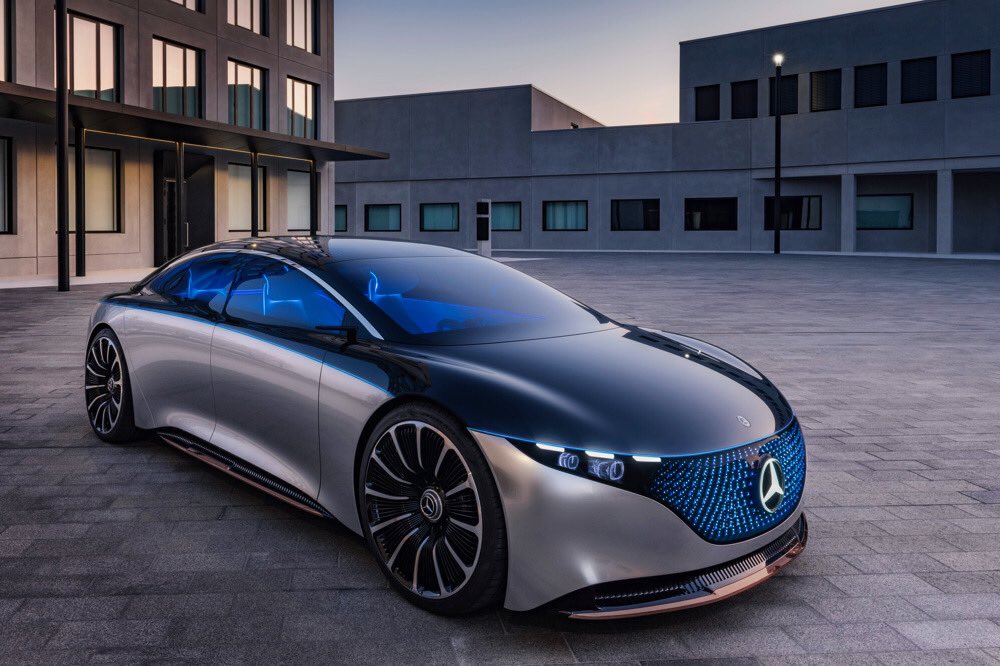
The 2025 Mercedes-Benz EQS sedan blends the opulence of the flagship S-class sedan with an electric powertrain and a polarizing, ovoid-shaped body. It represents Mercedes’ commitment to luxury electric mobility with sophisticated autonomous driving capabilities.
Sensor Capabilities
- Drive Pilot system with LiDAR technology
- Multiple cameras for 360-degree environmental monitoring
- Radar sensors for long-range detection
- Ultrasonic sensors for parking and low-speed maneuvering
Hardware
- Advanced Mercedes-Benz User Experience (MBUX) system
- Dedicated processing units for autonomous driving functions
- Redundant sensor systems for enhanced safety
- High-definition mapping integration
Level of Automation
SAE Level 3 (conditional automation) with Drive Pilot system – one of the few consumer-available Level 3 systems globally.
Miles Driven in Autonomous Mode
Mercedes reports millions of test miles in autonomous mode, though they haven’t released specific consumer usage statistics like Tesla.
Autonomous Driving Features
- Drive Pilot: Hands-free highway driving up to 37 mph
- Active Distance Assist DISTRONIC: Adaptive cruise control with stop-and-go
- Active Steering Assist: Lane keeping and centering
- Active Lane Change Assist: Automated lane changes with driver confirmation
- Remote Parking Assist: Smartphone-controlled parking
Software and Intelligence Performance
Mercedes takes a cautious, validation-heavy approach to autonomous driving, prioritizing safety over rapid feature deployment. Updates are less frequent but thoroughly tested.
User Experience and Interface
Each receives adaptive cruise control, lane keeping and centering, automatic emergency braking, and a blind-spot monitor. A driver attention monitor, adaptive headlights, parking sensors, and a 360-degree camera are also standard. The MBUX Hyperscreen provides an intuitive interface for autonomous driving controls.
Third-Party Safety Ratings and Safety Results
The EQS has earned top safety ratings from Euro NCAP and IIHS, with particular praise for its advanced driver assistance systems.
Geographic Availability and Regulatory Approvals
Drive Pilot is currently available in Germany and Nevada, with expansion planned to other regions as regulatory approvals are obtained.
3. Ford Mustang Mach-E GT
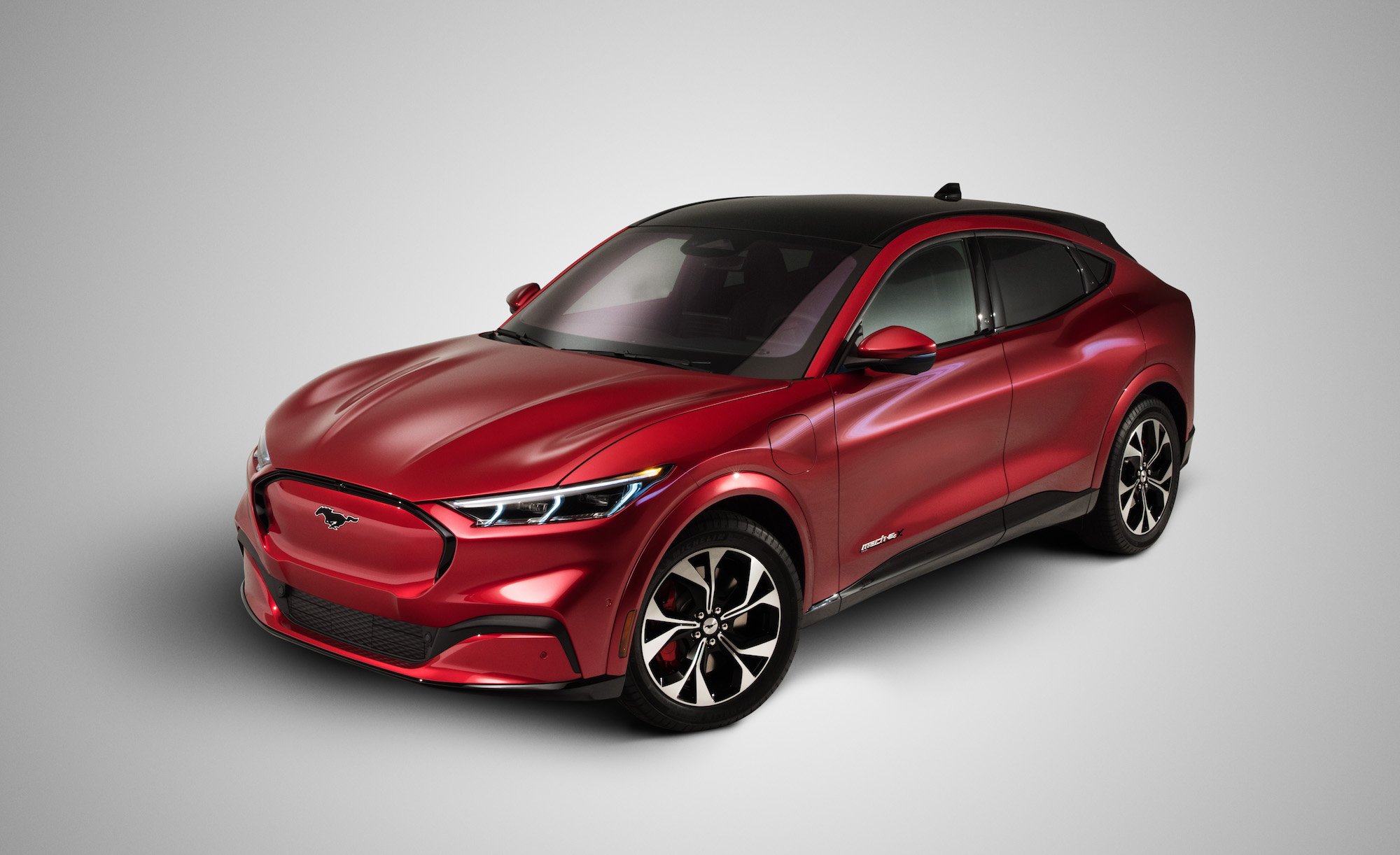
The Ford Mustang Mach-E GT combines iconic Mustang performance with Ford’s BlueCruise hands-free driving technology, offering an engaging electric driving experience with advanced autonomous capabilities.
Sensor Capabilities
- Advanced camera array for environmental awareness
- Radar sensors for object detection and tracking
- Driver-facing camera for attention monitoring
- Ultrasonic sensors for parking assistance
Hardware
- SYNC 4A infotainment system with BlueCruise integration
- Dedicated processing hardware for autonomous functions
- High-definition mapping data integration
- Over-the-air update capability
Level of Automation
Ford BlueCruise operates on SAE Level 2+ with hands-free highway driving on pre-mapped “Blue Zones.”
Miles Driven in Autonomous Mode
Ford reports growing BlueCruise usage across their fleet, though specific Mach-E statistics aren’t separately detailed.
Autonomous Driving Features
- BlueCruise: Hands-free highway driving on 130,000+ miles of mapped roads
- Adaptive Cruise Control with Stop-and-Go: Traffic-responsive speed control
- Lane Centering: Maintains vehicle position in lane
- Evasive Steering Assist: Helps avoid obstacles when braking isn’t enough
- Active Park Assist 2.0: Automated parallel and perpendicular parking
Software and Intelligence Performance
BlueCruise offers reliable performance on mapped highways with regular over-the-air updates expanding capabilities and mapped road coverage.
User Experience and Interface
The 15.5-inch SYNC 4A touchscreen provides clear BlueCruise status information and intuitive controls for autonomous driving features.
Third-Party Safety Ratings and Safety Results
The Mach-E has earned IIHS Top Safety Pick+ award and NHTSA 5-star overall safety rating.
Geographic Availability and Regulatory Approvals
BlueCruise is available on mapped highways in the United States and Canada, with plans for international expansion.
4. BMW iX xDrive50
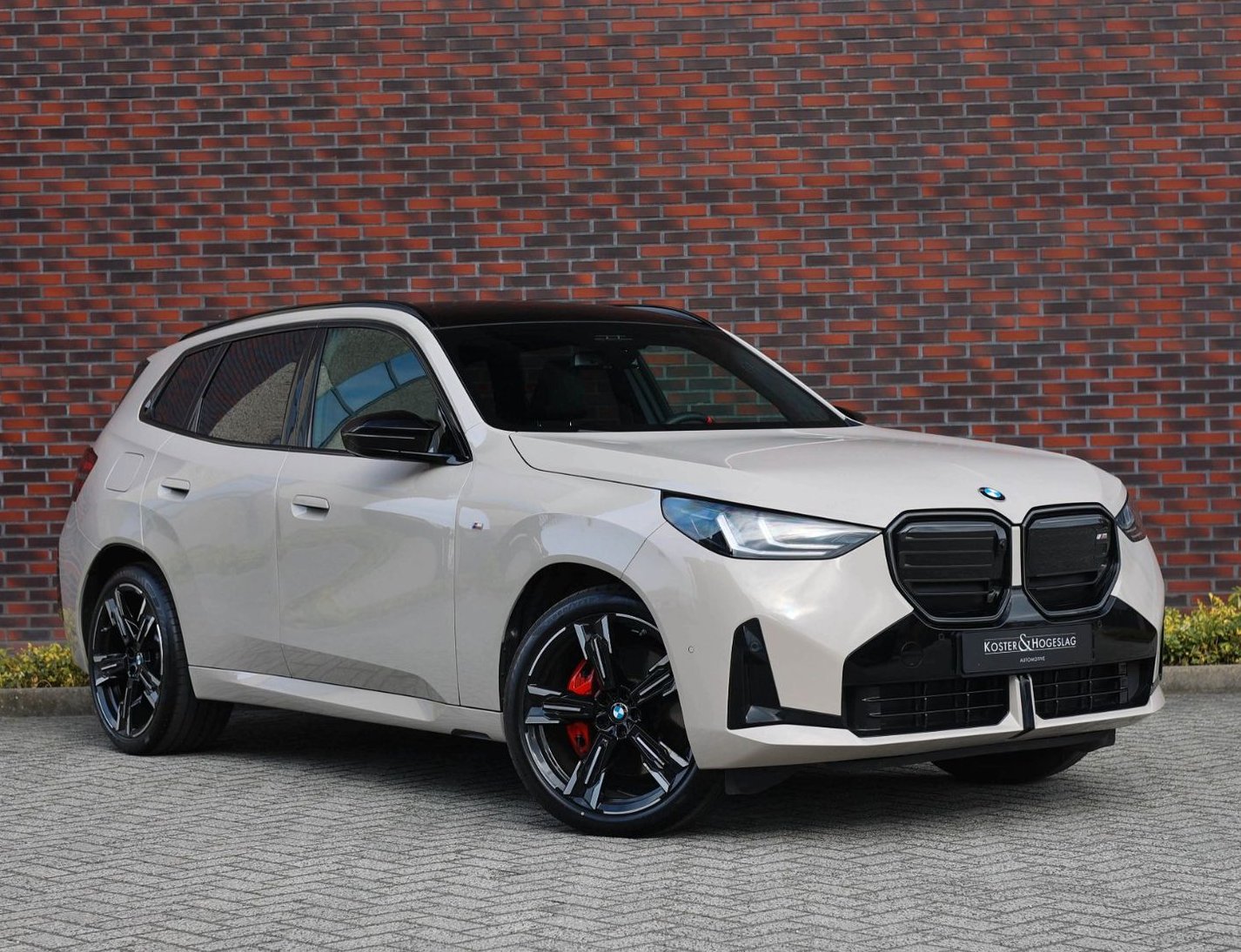
The BMW iX xDrive50 represents BMW’s vision of sustainable luxury mobility, combining impressive electric performance with their latest autonomous driving technology in a distinctive SUV package.
Sensor Capabilities
- BMW’s Personal Pilot Professional sensor suite
- Multiple cameras for comprehensive environmental awareness
- Radar and ultrasonic sensors for object detection
- Advanced driver monitoring systems
Hardware
- BMW Operating System 8 with dedicated AI processing
- Integrated BMW Maps for navigation-assisted driving
- Redundant safety systems and fail-safe mechanisms
- Over-the-air update capability
Level of Automation
SAE Level 2+ with hands-free highway driving capabilities and advanced driver assistance features.
Miles Driven in Autonomous Mode
BMW reports extensive testing miles but hasn’t released specific consumer autonomous driving statistics.
Autonomous Driving Features
- Driving Assistant Professional: Comprehensive highway automation
- Traffic Jam Assistant: Stop-and-go traffic navigation
- Lane Change Assistant: Automated lane changes with driver supervision
- Parking Assistant Professional: Automated parking with smartphone control
- Reversing Assistant: Remembers and replicates parking maneuvers
Software and Intelligence Performance
BMW’s approach emphasizes reliability and predictability over cutting-edge features, resulting in consistent performance across various driving conditions.
User Experience and Interface
The iDrive 8 system provides clear visualizations of autonomous driving status through the curved display. The steering wheel vibration and audio alerts effectively communicate system status.
Third-Party Safety Ratings and Safety Results
The iX has earned excellent safety ratings from IIHS and Euro NCAP, with high marks for crash avoidance technology.
Geographic Availability and Regulatory Approvals
Personal Pilot Professional features are available in most markets where the iX is sold, with some regional variations based on local regulations.
5. Lucid Air Dream Edition
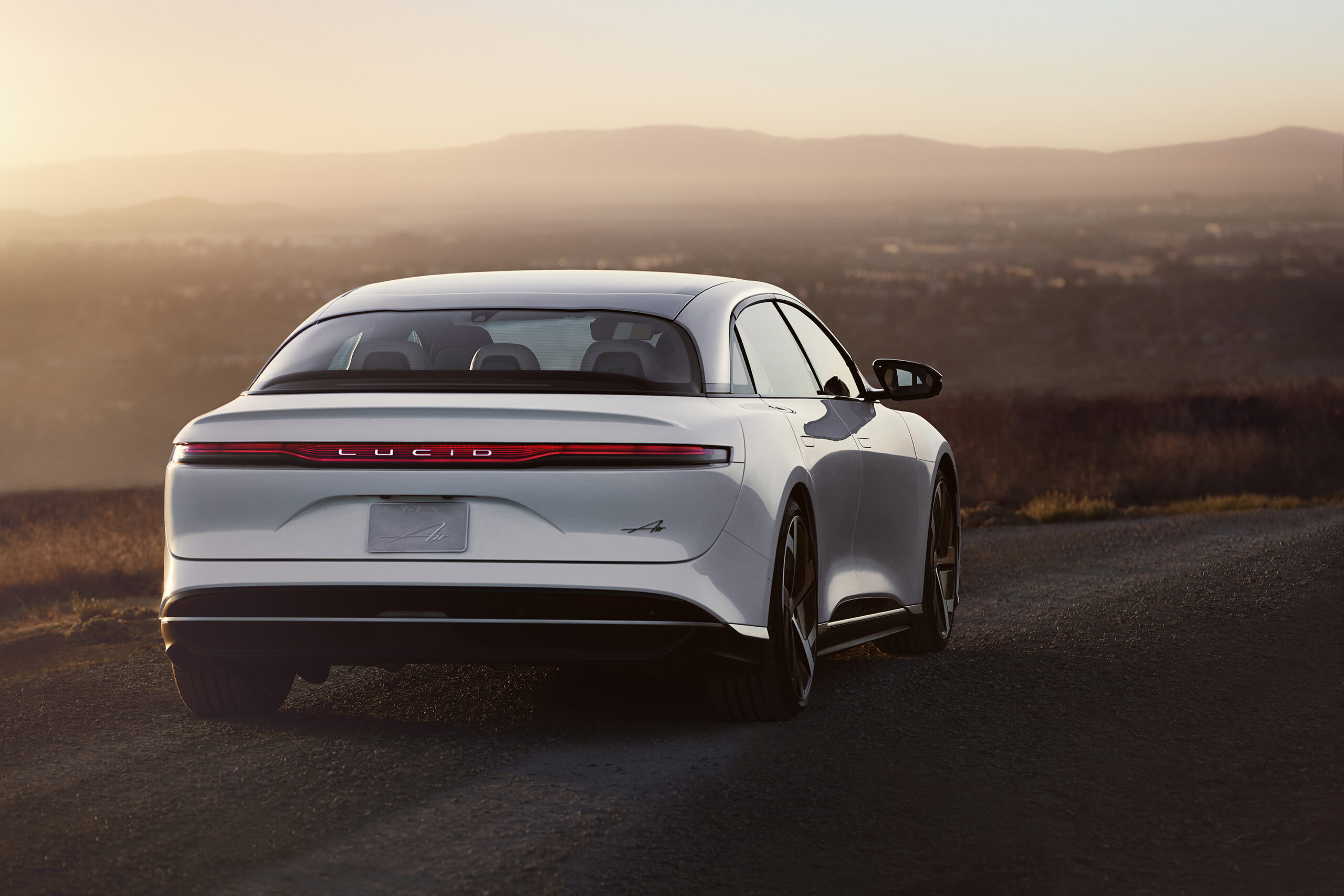
The Air has the range, the tech, and the grandeur to justify its hefty price tag. The Lucid Air Dream Edition combines luxury, performance, and advanced autonomous driving capabilities in a sleek sedan package.
Sensor Capabilities
- DreamDrive system with 32 sensors total
- High-resolution LiDAR technology
- 14 visible light cameras
- Long-range radar sensors
- Ultrasonic sensors for parking assistance
Hardware
- Custom DreamDrive processing platform
- Advanced computing architecture for AI processing
- High-definition mapping integration
- Redundant sensor systems for enhanced safety
Level of Automation
Currently SAE Level 2 with plans for Level 3 capabilities through over-the-air updates.
Miles Driven in Autonomous Mode
As a newer entrant, Lucid hasn’t released extensive autonomous driving mileage statistics.
Autonomous Driving Features
- Adaptive Cruise Control: Speed and distance management
- Lane Centering: Keeps vehicle centered in lane
- Traffic Sign Recognition: Identifies speed limits and road signs
- Automatic Emergency Braking: Forward and rear collision avoidance
- Highway Assist: Semi-autonomous highway driving
Software and Intelligence Performance
While the hardware foundation is excellent, Lucid’s software maturity is still developing compared to more established players like Tesla.
User Experience and Interface
The 34-inch curved Glass Cockpit display provides comprehensive information about autonomous driving status and environmental awareness.
Third-Party Safety Ratings and Safety Results
The Lucid Air has earned strong safety ratings from NHTSA and IIHS, though autonomous system-specific safety data is limited.
Geographic Availability and Regulatory Approvals
DreamDrive features are available in the United States with plans for international expansion as regulatory approvals are secured.
You May Also Like:
Tesla FSD (Supervised) Drives 362 Miles from San Francisco to LA Without Intervention
Autonomous Mobility: 10 Fascinating Things to Know About the Tesla Cybercab
6. Tesla Model Y Performance
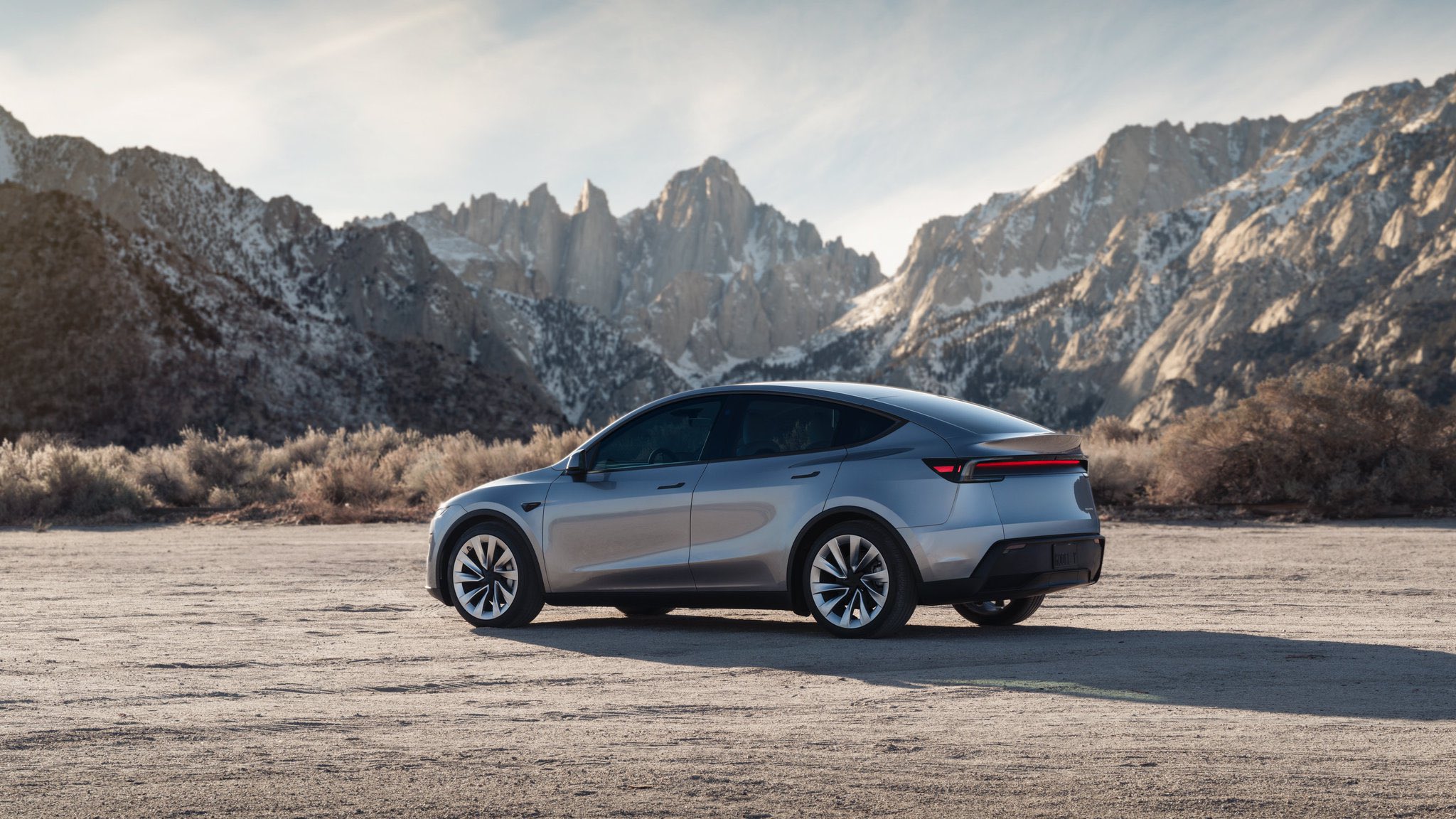
Sharing the same advanced Full Self-Driving capabilities as the Model S, the Model Y Performance offers Tesla’s cutting-edge autonomous technology in their most popular SUV format, making advanced self-driving accessible to more families.
Sensor Capabilities
- Identical sensor suite to Model S Plaid
- 8 surround cameras with 360-degree visibility
- 12 ultrasonic sensors for close-range detection
- Forward-facing radar for long-range awareness
- Interior driver monitoring camera
Hardware
- Same FSD Computer with dual neural processing units
- Custom Tesla AI inference chips
- Redundant safety systems
- Continuous over-the-air update capability
Level of Automation
SAE Level 2+ with Full Self-Driving Beta capabilities including city street navigation.
Miles Driven in Autonomous Mode
Benefits from Tesla’s collective 3 billion miles of FSD experience across their entire fleet.
Autonomous Driving Features
- Complete FSD suite identical to Model S
- Navigate on Autopilot for highway driving
- Auto Lane Change with navigation integration
- Traffic Light and Stop Sign Control
- Smart Summon and Autopark functionality
Software and Intelligence Performance
Identical neural network performance to other Tesla vehicles, with the same rapid improvement cycle through fleet learning.
User Experience and Interface
Features the same 15-inch touchscreen interface as other Tesla vehicles, providing real-time visualization of autonomous driving decisions.
Third-Party Safety Ratings and Safety Results
The Model Y has earned NHTSA’s 5-star overall safety rating and IIHS Top Safety Pick award.
Geographic Availability and Regulatory Approvals
Same availability as Model S – FSD Beta in US and Canada, with basic Autopilot features available globally.
7. Genesis GV70 Electrified
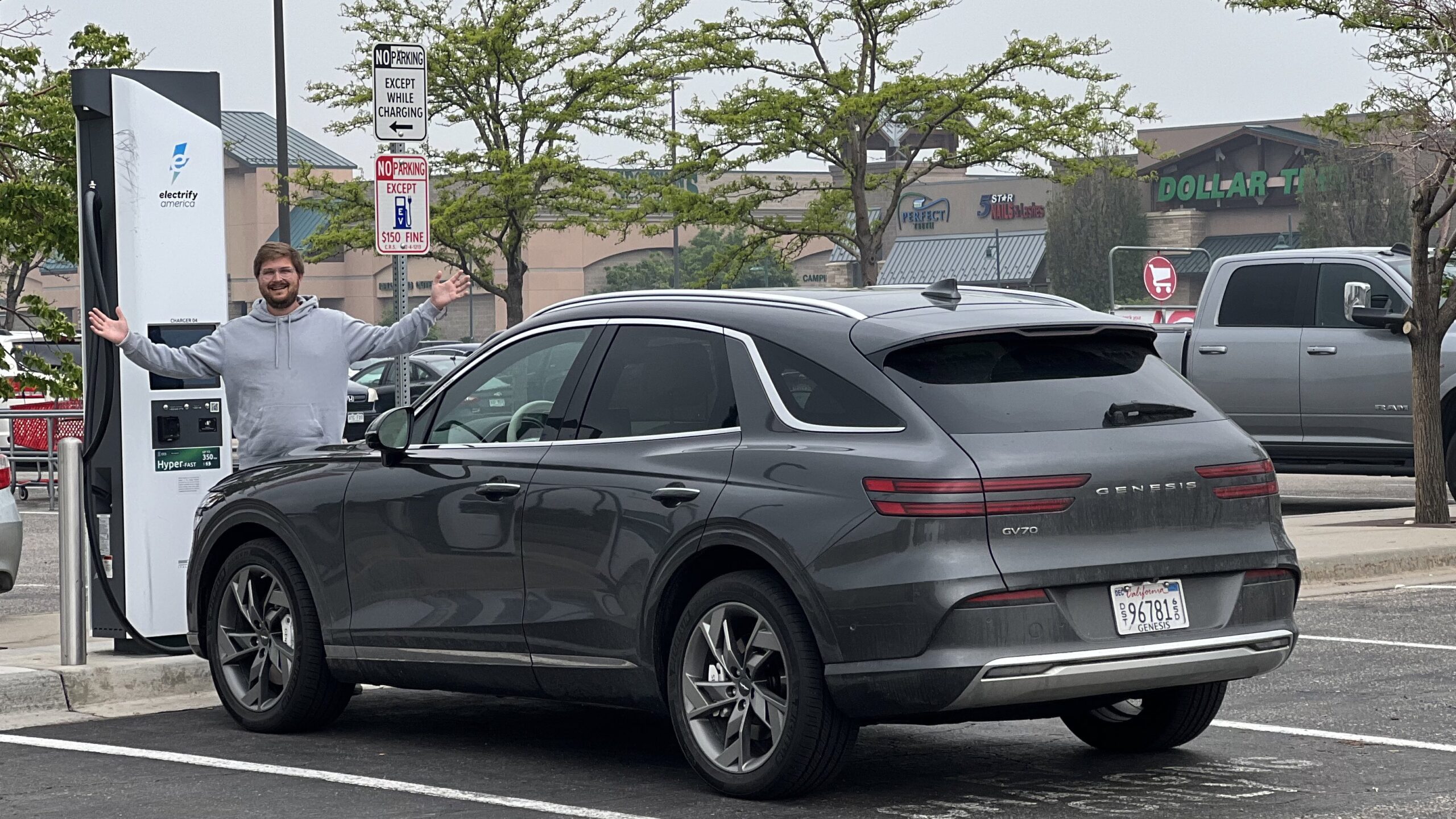
The Genesis GV70 Electrified brings luxury and sophistication to the electric SUV segment, featuring Genesis’s advanced Highway Driving Assist 2 technology for a refined autonomous driving experience.
Sensor Capabilities
- Advanced forward-facing camera system
- Multiple radar sensors for object detection
- Ultrasonic sensors for parking assistance
- Driver attention monitoring system
Hardware
- Genesis Connected Services integration
- Advanced driver assistance processing unit
- High-resolution display systems
- Over-the-air update capability
Level of Automation
SAE Level 2 with advanced highway automation features.
Miles Driven in Autonomous Mode
Genesis hasn’t released specific autonomous driving mileage statistics for consumer vehicles.
Autonomous Driving Features
- Highway Driving Assist 2: Lane-centered highway driving
- Smart Cruise Control with Stop & Go: Traffic-aware speed control
- Lane Following Assist: Maintains lane position
- Highway Auto Steering: Automated steering on highways
- Remote Smart Parking Assist: Smartphone-controlled parking
Software and Intelligence Performance
Genesis focuses on smooth, predictable performance rather than aggressive autonomous capabilities, resulting in a comfortable driving experience.
User Experience and Interface
The 14.5-inch infotainment display provides clear autonomous driving status information with intuitive controls.
Third-Party Safety Ratings and Safety Results
The GV70 Electrified has earned strong safety ratings from IIHS and NHTSA for its safety systems.
Geographic Availability and Regulatory Approvals
Highway Driving Assist 2 is available in most markets where the GV70 Electrified is sold.
8. Cadillac Lyriq

The Cadillac Lyriq represents GM’s premium electric SUV offering, featuring their highly regarded Super Cruise hands-free driving technology that’s been refined over several years of development.
Sensor Capabilities
- Precision LiDAR mapping integration
- Multiple cameras for environmental monitoring
- Advanced driver attention monitoring
- Radar and ultrasonic sensors
Hardware
- Super Cruise dedicated processing hardware
- High-definition mapping data integration
- Driver monitoring infrared camera
- Redundant safety systems
Level of Automation
SAE Level 2+ with hands-free highway driving on mapped roads.
Miles Driven in Autonomous Mode
GM reports millions of Super Cruise miles across their fleet, though specific Lyriq data isn’t separately available.
Autonomous Driving Features
- Super Cruise: Hands-free highway driving on 200,000+ miles of mapped roads
- Adaptive Cruise Control: Traffic-aware speed management
- Lane Keep Assist with Lane Following: Centered lane driving
- Automatic Lane Change: Driver-initiated lane changes
- Enhanced Automatic Parking Assist: Automated parking maneuvers
Software and Intelligence Performance
Super Cruise is known for its reliability and confidence on mapped highways.
User Experience and Interface
The 33-inch curved LED display provides excellent visualization of Super Cruise operation with clear status indicators.
Third-Party Safety Ratings and Safety Results
The Lyriq has earned excellent safety ratings from NHTSA and IIHS, with particular praise for its driver assistance technologies.
Geographic Availability and Regulatory Approvals
Super Cruise is available on mapped highways in the United States and Canada, with expansion planned to additional markets.
9. Hyundai IONIQ 6
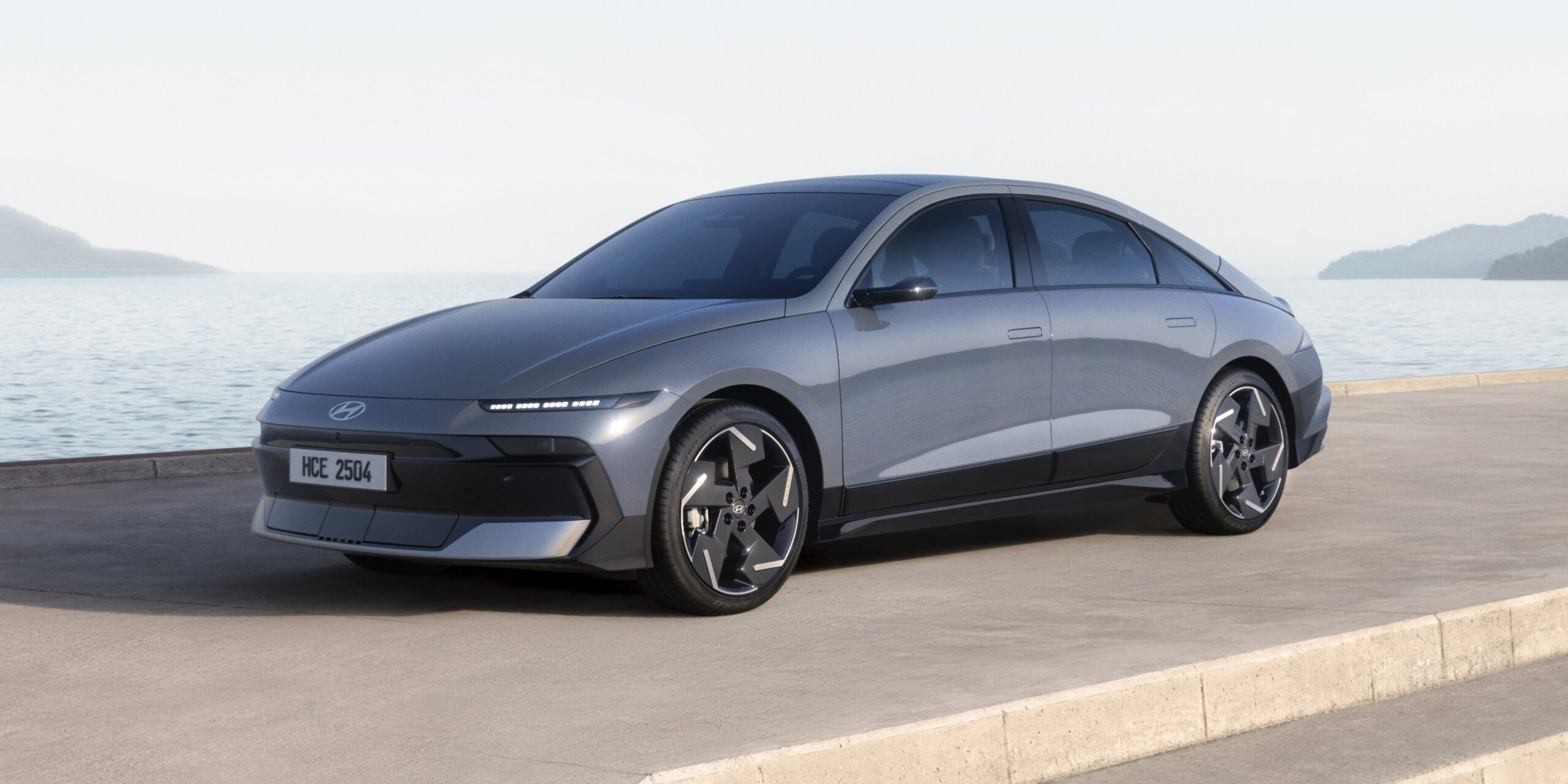
The Hyundai IONIQ 6 combines striking aerodynamic design with Hyundai’s Highway Driving Assist 2 technology, offering an efficient and technologically advanced electric sedan experience.
Sensor Capabilities
- Advanced forward-facing camera system
- Multiple radar sensors for comprehensive monitoring
- Ultrasonic sensors for parking and low-speed maneuvers
- Driver attention warning system
Hardware
- SmartSense safety suite integration
- Advanced driver assistance processing
- 12.3-inch digital cluster and infotainment displays
- Over-the-air update capability
Level of Automation
SAE Level 2 with advanced highway assistance features.
Miles Driven in Autonomous Mode
Hyundai hasn’t released specific autonomous driving mileage statistics for the IONIQ 6.
Autonomous Driving Features
- Highway Driving Assist 2: Lane-centered highway driving
- Smart Cruise Control with Stop & Go: Traffic-adaptive speed control
- Lane Following Assist: Maintains lane position at highway speeds
- Lane Change Assist: Monitors blind spots during lane changes
- Remote Smart Parking Assist: Smartphone-controlled parking maneuvers
Software and Intelligence Performance
Hyundai’s system provides reliable highway assistance with a focus on driver comfort and safety, though it requires more active driver engagement than industry leaders.
User Experience and Interface
The dual 12.3-inch displays provide clear information about autonomous driving status with straightforward controls.
Third-Party Safety Ratings and Safety Results
The IONIQ 6 has earned strong safety ratings from various testing organizations for its comprehensive safety suite.
Geographic Availability and Regulatory Approvals
Highway Driving Assist 2 is available in most markets where the IONIQ 6 is sold, with some regional feature variations.
10. Volvo XC40 Recharge

The Volvo XC40 Recharge brings Volvo’s legendary safety focus to the electric SUV segment, featuring their reliable Pilot Assist system that prioritizes predictable, safe autonomous driving behavior.
Sensor Capabilities
- Multiple cameras for environmental monitoring
- Radar sensors for object detection
- Ultrasonic sensors for parking assistance
- Advanced driver monitoring systems
Hardware
- Sensus infotainment system integration
- Dedicated safety processing units
- Google-based Android Automotive OS
- Over-the-air update capability
Level of Automation
SAE Level 2 with focus on safety and reliability over advanced features.
Miles Driven in Autonomous Mode
Volvo reports extensive testing of their autonomous systems but hasn’t released specific consumer usage statistics.
Autonomous Driving Features
- Pilot Assist: Lane keeping and adaptive cruise control up to 80 mph
- Adaptive Cruise Control: Maintains set speed and following distance
- Lane Keeping Aid: Gentle steering correction to maintain lane position
- Cross Traffic Alert: Warns of vehicles when backing up
- Park Assist Pilot: Automated parallel and perpendicular parking
Software and Intelligence Performance
Volvo’s approach prioritizes predictable, safe behavior over aggressive autonomous capabilities, resulting in a system that drivers trust.
User Experience and Interface
The 9-inch touchscreen with Google services provides straightforward autonomous driving controls and status information.
Third-Party Safety Ratings and Safety Results
The XC40 Recharge has earned strong safety ratings from Euro NCAP and IIHS, maintaining Volvo’s reputation for safety excellence.
Geographic Availability and Regulatory Approvals
Pilot Assist is available globally in most markets where Volvo operates, with consistent feature availability.
The Future of Self-Driving Electric Cars
As we look toward the remainder of 2025 and beyond, the landscape of self-driving electric cars continues to evolve beautifully. Tesla launched their commercial taxi service “Robotaxi” to a small group of invited users, indicating a paradigm shift in how we move.
The vehicles on this list represent different philosophies in autonomous driving development. Tesla and Ford BlueCruise are strong contenders. Traditional luxury manufacturers like Mercedes and BMW prioritize validation and safety over speed of implementation. Each approach has its merits, and consumers benefit from having these diverse options.
The future looks bright for self-driving electric cars, with each manufacturer contributing unique innovations that push the entire industry forward. Whether you choose Tesla’s neural network approach, Mercedes’ validated luxury experience, or any of the other excellent options on this list, you’ll be experiencing the cutting edge of automotive technology while contributing to a more sustainable future.
As someone who has watched this industry evolve over the past decade, I’m genuinely excited about where we’re headed. The best self-driving electric cars of 2025 are just the beginning of an incredible journey toward safer, more efficient, and more sustainable transportation for everyone.
Also Read:
6 Best Self-Driving Cars in the US (2025)
Top 5 Autonomous Trucking Companies in the US (2025)
Top 3 U.S. Level 4 Self-Driving Cars You Can Buy in 2026
Must-Read: Top 10 Autonomous Vehicle Trends (2025)
Ultimate Glossary of 100 Autonomous Vehicle Terms

I’m Dr. Brandial Bright, also known as the AVangelist. As a dedicated and passionate researcher in autonomous and electric vehicles (AVs and EVs), my mission is to educate and raise awareness within the automotive industry. As the Founder and Managing Partner of Fifth Level Consulting, I promote the adoption and innovation of advanced vehicle technologies through speaking engagements, consulting, and research as we progress to level 5 fully autonomous vehicles.

